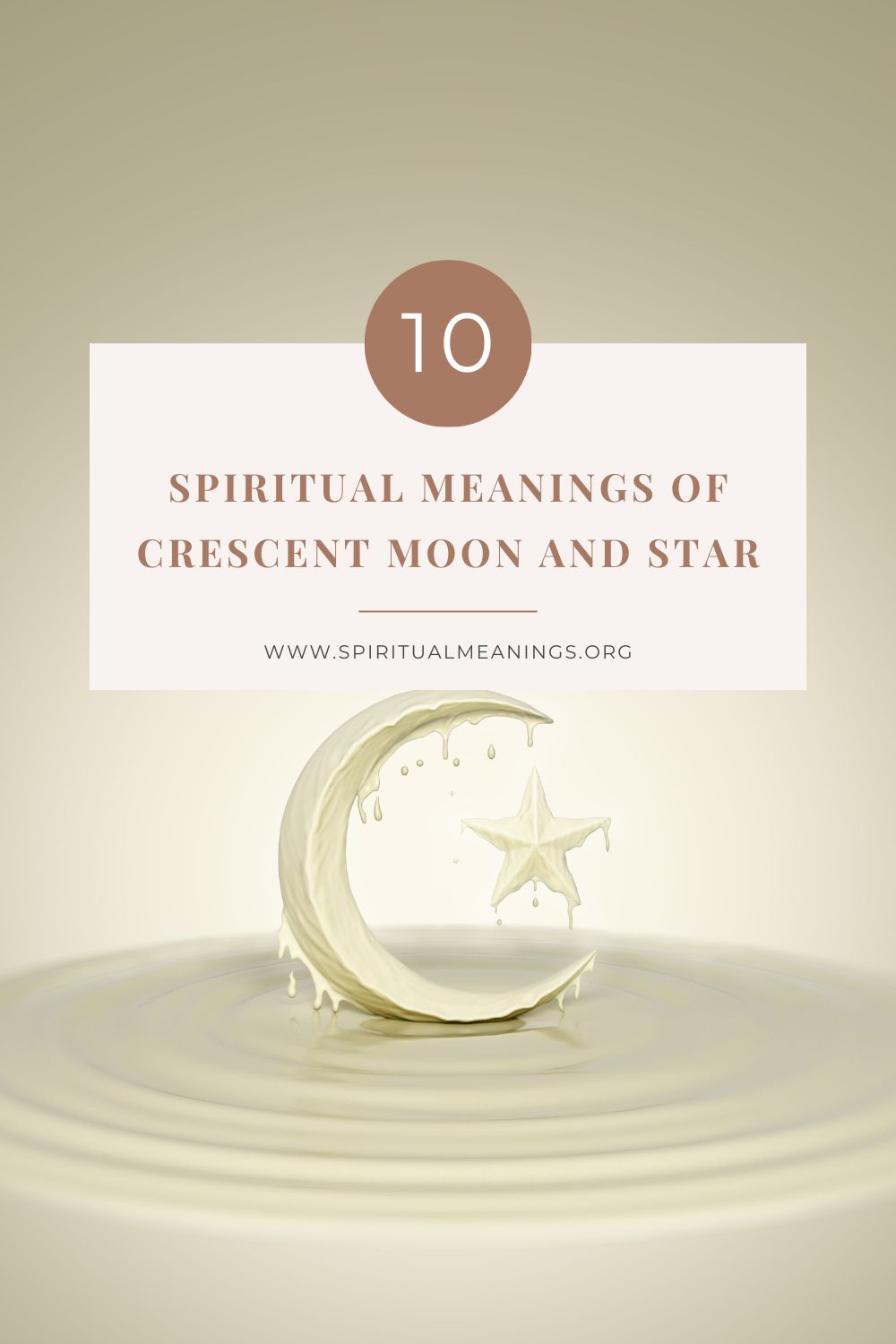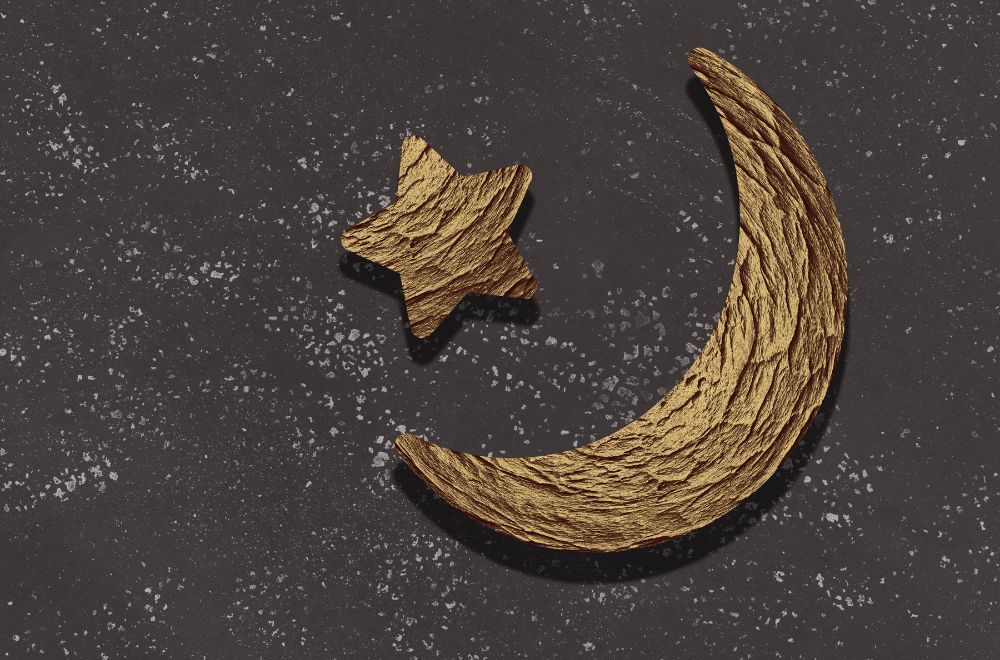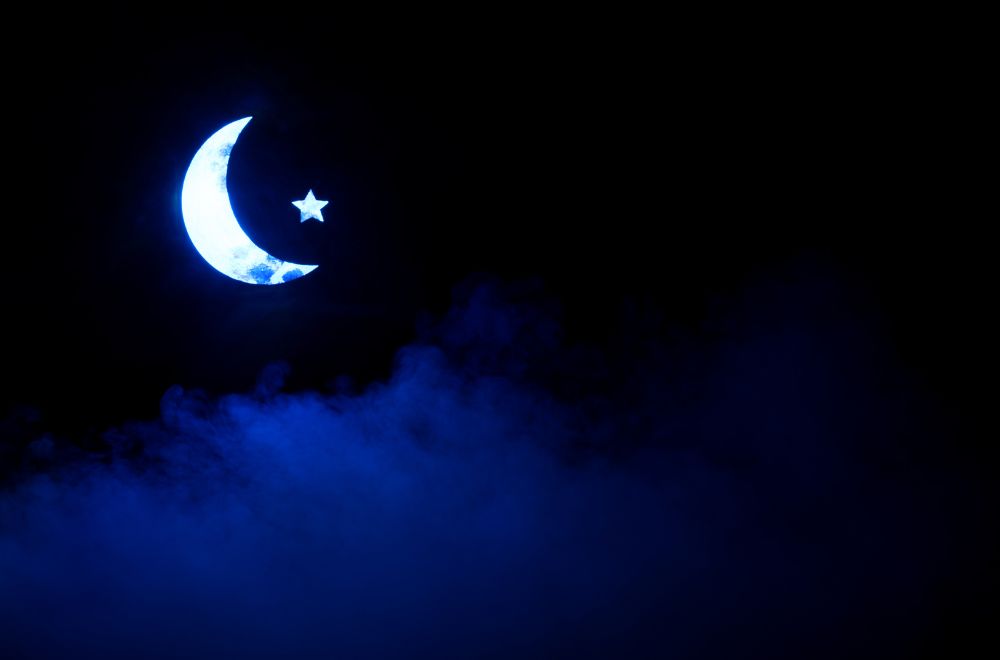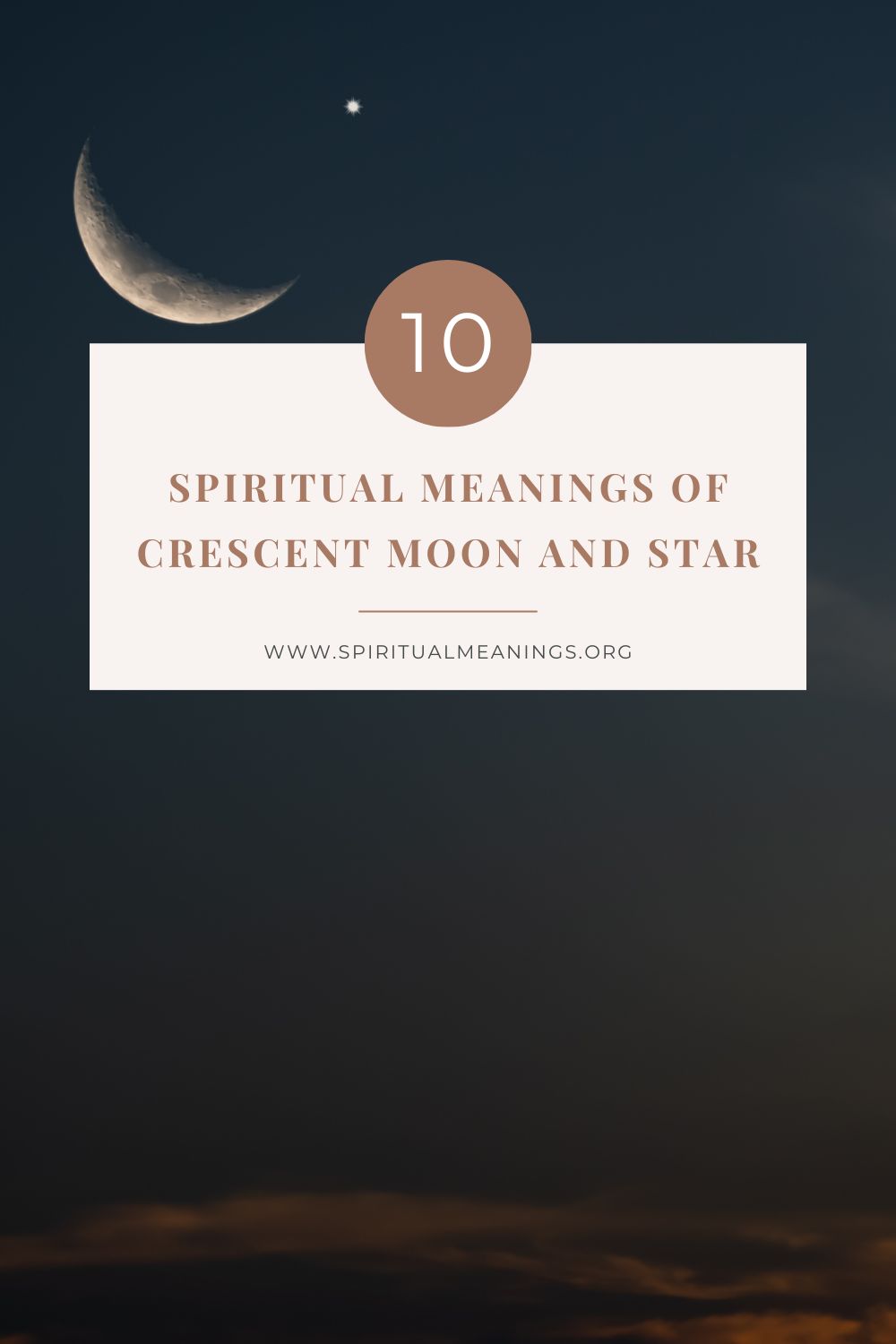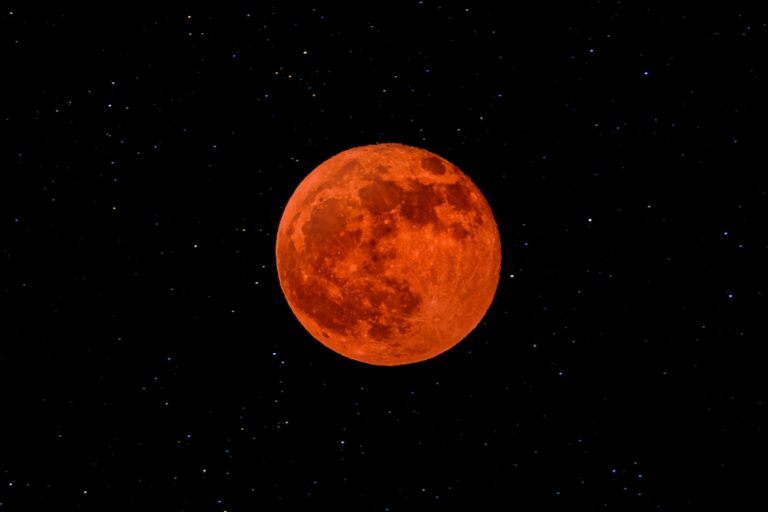Most people are familiar with the crescent moon and star as a symbol of Islam, but it’s a motif that has its roots much further back in time.
So to explain how it became the symbol of Islam and also to explore where this symbol ultimately came from, in this post, we look at the details of crescent moon and star spiritual meaning.
Crescent Moon and Star Spiritual Meanings
1. The symbol of the Ottoman Empire
The crescent moon and star is an ancient symbol that can be traced back to the distant past, but its modern usage derives mainly from its adoption as the emblem and flag of the Ottoman Empire.
The Ottoman Empire was founded as a small kingdom in northwestern Anatolia in 1299 by Osman I, and from these humble beginnings, it grew into an empire that encompassed much of southeastern Europe, West Asia and North Africa.
One of the major dates in the rise of the Ottoman Empire came in 1453 when, under Mehmed II (later styled “Mehmed the Conqueror”), the Ottomans captured Constantinople, the capital of the Byzantine Empire, thus ending the Eastern Roman Empire.
Although the crescent moon symbol without a star had appeared on Islamic war flags as early as the 14th century, the Ottoman Empire only adopted the crescent moon and star together during the 18th century.
At that time, they began using it on flags to represent the empire, and later, in the 19th century, it became the empire’s only official flag.
It is unclear why this symbol was chosen, and its precise significance is unknown.
According to one story, Osman I is said to have seen a star and crescent moon in the sky on the day he founded his kingdom, but this version is likely to be apocryphal.
More likely is that the symbol, which had also been a symbol of Byzantium, was chosen to reflect the Ottoman dominance over Byzantium that came as a result of the capture of Constantinople in 1453.
2. The symbol of Islam
Nowadays, most people recognize the crescent moon and star as a symbol of Islam, and this is what it has come to represent – but in truth, in the beginning, there was no deep spiritual reason for this.
Rather, the adoption of this image as a symbol of Islam largely came about through its association with the Ottoman Empire.
As a large, powerful and prestigious Islamic empire spanning three continents, the Ottoman Empire was seen as a source of pride by many Muslims.
Furthermore, the symbol was prominently displayed on mosques throughout the empire – at first, not as a symbol of Islam but as an Ottoman symbol.
However, over time, through becoming accustomed to seeing this symbol on mosques everywhere, the symbol became associated with Islam in people’s minds.
Then, even after the fall of the Ottoman Empire, this association remained, and with time, the image became seen primarily as a symbol of Islam rather than of the Ottoman Empire.
That said, nowadays, some people like to point to the aptness this symbol has as representing the Islamic religion since the crescent moon and the star can be seen as symbolizing the start of a new lunar cycle as well as the cycle of rebirth and renewal.
3. On national flags
As well as a symbol adorning mosques around the world, the crescent moon and star motif has also been a prominent part of the national flags of many Muslim-majority countries and territories.
For example, the modern Turkish flag is a direct descendant of the Ottoman flag, and other countries that were once in the Ottoman sphere of influence have also incorporated the motif into their flags. For example, the flag of Tunisia has used a similar design since 1831.
Later, other countries also created flags that incorporated the same symbol. For example, the flags of Malaysia and Azerbaijan among others include this symbol.
In flags like these, which belong to countries that were never part of the Ottoman Empire, the inclusion of a crescent moon and star represents Islam and its importance in the country rather than any connection to the Ottoman Empire.
4. Sin and Ishtar in ancient Mesopotamia
Although, as we’ve seen, the modern meaning of the crescent moon and star symbol stems from its adoption by the Ottoman Empire – and this in turn was probably inspired, at least in part, by its use as the symbol of Byzantium – it is a much older motif than this.
Among the earliest known instances of this symbol are those from the Ancient Near East.
In ancient Mesopotamia, the motif was connected to the deities Sin and Ishtar (also known as Nanna and Inanna). Sin was the god of the Moon while Ishtar was the goddess of love, war and fertility and was also associated with Venus.
Although in modern times, our relationship with the night sky is much diminished, back then, people were far more aware than today of the twinkling celestial bodies above them.
After the Sun and the Moon, Venus is the brightest object in the sky, and it is known as the Morning Star or the Evening Star since those are the times when it is most visible.
It’s easy to imagine people looking up into the sky at night and seeing the Moon and Venus and worshipping them as gods.
5. The Sun and the Moon
There is another suggestion that the crescent moon and star symbol represents the Sun and the Moon rather than the Moon and Venus, and as such, symbolizes the constant cycle of night and day.
By extension, this represents the cyclical nature of the universe and the never-ending cycle of life, death and rebirth, which may be one of the oldest spiritual interpretations of the crescent moon and star motif.
6. The symbol of Byzantium
As we’ve noted, later, the same motif became the symbol of the Byzantine Empire and of the capital Byzantium itself, the city that Constantine I later renamed Constantinople and that ultimately became modern Istanbul.
Again, the precise signification of this symbol is not clear, but part of its meaning is likely to come from the Greco-Roman heritage of Byzantium and especially from the goddess Hecate.
Hecate was the patron goddess of Byzantium because, according to legend, she saved the city from an attack by Phillip of Macedonia by causing a bright light to appear in the sky at night.
7. The divine feminine
The early pre-Islamic symbolism of the crescent moon and star motif is also likely to be related at least in part to the idea of the divine feminine.
The image is said to be a representation of protection, with the curve of the moon cradling the star being seen as suggestive of a mother cradling a baby.
Another goddess that was associated with Byzantium was Artemis, known to the Romans as Diana.
She was the goddess of the hunt, the wilderness, wild animals, nature, vegetation, childbirth, care of children and chastity and later also became associated with the Moon.
She appeared on several Byzantine coins and was also symbolic of the concept of the divine feminine.
8. Guidance
Since the dawn of time, people have looked up into the night sky and used the stars to navigate, and this is another meaning one can take from the crescent moon and star image.
Regardless of your religious or spiritual beliefs, you can look upon this symbol as one of guidance, and if you need help choosing your path, you can focus on it while you pray or meditate to receive the guidance from it that you seek.
9. Peace and harmony
The symbol can also be seen as one of peace and harmony. It represents the balance between light and dark, day and night, male and female, life and death or yin and yang.
It reminds us that we live in a world of duality and that there are many examples of pairs that require two parts to make them whole.
When the two halves are brought together, harmony and balance are restored, bringing peace to the mind and to the spirit.
10. Cosmic unity and interconnectedness
Finally, the crescent moon and star motif can be seen as a symbol of the universe and of cosmic unity.
Everything in the universe is connected, and each one of us is part of a greater whole.
We can understand this through religion such as Islam, Christianity, Buddhism or any of the other major religions as well as through more personal versions of spirituality.
The precise details of our faith or spirituality are not important but rather the understanding of the universe and the connection to it that faith and spirituality bring.
So in many ways, the symbol of the crescent moon and star represents this interconnectedness, regardless of which religion we follow.
A symbol of Islam and much more besides
As we’ve seen, the crescent moon and star today is mostly seen as a symbol of Islam, and it came to be regarded as such due to its association with the Ottoman Empire.
However, it also has a much longer history and has meant lots of other things throughout the ages – and in modern spirituality, it can be viewed in a variety of different ways by Muslims and non-Muslims alike.

